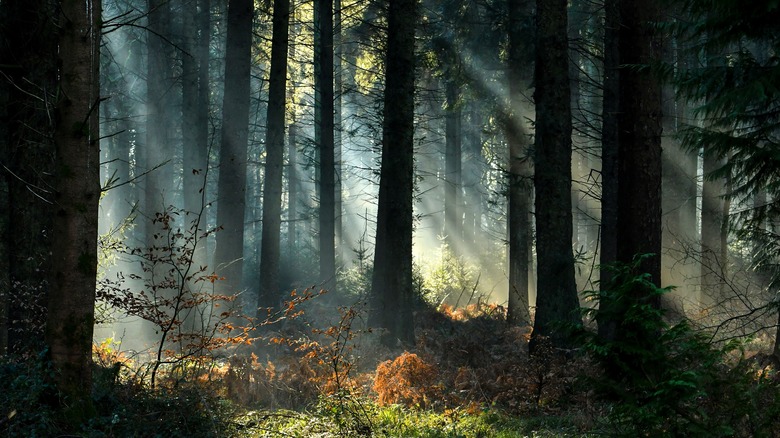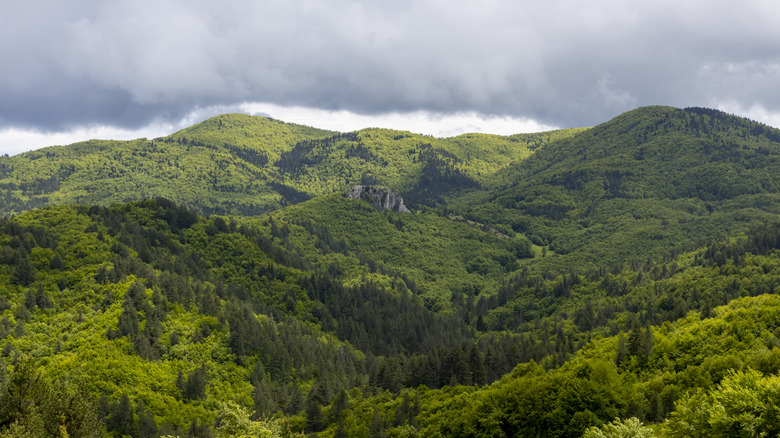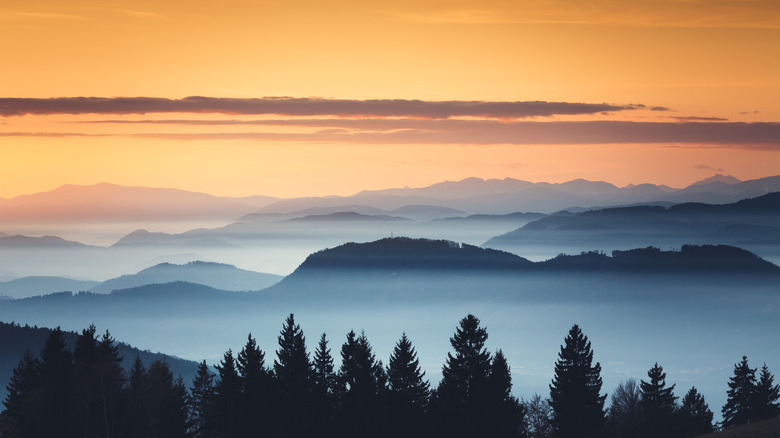How To Navigate Using The Sun If You're Lost In The Woods
Let's be honest: Some folks are going to freak out if they can't get their favorite hemp milk with their latte, let alone if they lose track of their trail on a hike. People come equipped with various degrees of resilience to newness and unforeseen circumstances, and with different levels of reliance on technology. We all know people who can't take two steps without stuffing their face in Google Maps for directions, or who won't even consider cooking a new dish without perfect, blow-by-blow instructions. Others wander where they want and chuck a bunch of stuff in a pan and stir it all around. In certain cases, though, it pays to have some old-school — even ancient-school — knowledge about how to survive and stay safe. Besides, there's no reason to make the ghosts of our hunter-forager ancestors sigh at how pathetically helpless we are.
Case in point: using the sun for directions. This particular skill ranks up there with "how to make a fire" and "how to signal SOS." Using the sun for directions in a desert, let's say, is going to be easier than the forest because of a lack of tree cover and a lack of clouds. Either way, just remember your basic cardinal directions — north, south, east, west — and remember that the sun rises in the east and sets in the west, as Popular Science outlines. In winter the sun sticks lower to the ground. From there, pick your direction and get moving.
Find north, track the sun, follow water
Granted, "Use the sun to determine north, south, east, and west" isn't going to help all that much if, a) there's no sun, b) you don't have a mental map of the area and nearest trail or road, or c) there's a bear chewing on your leg. At least one of those things is partially in your control, however. Meaning, don't head into the woods without refreshing yourself about basic cardinal directions and having some crucial survival items like a flashlight. A physical map wouldn't hurt, either. Also, don't assume there'll be satellite coverage over every square inch of the woods. If you're stranded in the woods because of a reason out of your control, though — e.g., you survived a plane crash and belong in a disaster film — chuck all this advice out of the window.
Beyond such common sense items, Popular Science describes some helpful pro tips. For instance, water sources always flow from higher elevations to lower elevations, and humans typically live downhill near water sources. So if there's a stream? Follow it down. Then again, climbing higher can help you spot power lines or gaps in the treeline that speak of roads or settlements. And if you can't figure out what's north because there's no sun? Moss and wet vegetation typically prefer growing in cooler environments facing away from the rising sun. All of these tips are true no matter if you're in the northern or southern hemisphere.
Shadowy comparisons
With all this talk of the sun, you might be thinking: What do I do if I'm lost in the dark? As Scouting Magazine says, staying still is your best bet unless you want to twist your angle, fall of a ledge, or smash your face on a branch. That being said, Popular Science points to other heavenly bodies if you want to get your bearings at night: the moon and stars. Remember that the moon gets its light from the sun, which means that the bright side of the moon faces the sun. This can help you determine east and west, and therefore north and south. And if you find the Little Dipper in the northern hemisphere, the North Star — Polaris — sits at the end of its handle. That's almost perfectly north.
The Outdoor Herbivore takes us one step further toward full-fledged survivalist and talks about finding north using shadows. Plunge a stick into the ground and mark the location of its shadow, then mark the shadow just 10 minutes later. The second mark will be east, and the first mark west, which can help you find all other directions. This is true in both hemispheres. You can also point the hour hand of your watch at the sun, and take the line between the hour hand and 12 as north-south. Beyond this things get complicated. But above all else: stay calm, breathe, focus, don't panic, and keeps your eyes on the sky.


